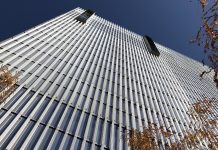
MIAMI, Nov. 25 (UPI) ─ The price of 19 brand-name dermatology drugs increased by an average of 400 percent since 2009, with the top two prices leaping by 1,700 percent, according to a new study.
Large, unexplained increases in the price of medications have become the norm, most notably with the 5,000 percent increase in price of Daraprim, a drug used to treat toxoplasmosis, in September.
Researchers in the study, published in JAMA Dermatology, said about 19 percent of Americans chose not to fill at least one prescription in 2014 because of its cost. Some of the blame is being placed on insurance companies with higher deductibles or those that don’t increase coverage after a drug’s price has been raised.
“As health insurance programs become more restrictive with their formularies or promote policies with high deductibles, patients are increasingly being forced to pay retail prices out of pocket for the drugs that will help them most,” the researchers wrote.
Researchers at the University of Miami and University of Pennsylvania surveyed Costco, CVS, Sam’s Club and Walgreens pharmacy locations in West Palm Beach in 2009, 2011, 2014, and 2015 to determine average prices on 72 commonly used drugs.
Of the 72 drugs, researchers focused on 19 based on how frequently they were prescribed or if they had unusual price increases, grouping them into what they were used to treat: acne and rosacea, psoriasis, topical corticosteroids, antiinfectives, and antineoplastics.
Overall, the 19 drugs increased in price by an average of 401 percent during the six-year period since 1999 — and the majority of the increases came after 2011. Antineoplastic drugs, used for cancer treatment, increased in price by 1,240 percent to an average of $10,926, the largest increase seen in the time period. Antiinfective rose the least, with prices only going up by $333, and psoriasis medications had the smallest increase at 180 percent.
Acne and rosacea drugs also went up by 195 percent, topical corticosteroids increased by 290 percent, and even some generic drugs researchers looked at went up by 279 percent between 2011 and 2014.
“We’re not talking about new drugs. We’re not talking about exotic drugs. We’re not talking about drugs that are listed as being in shortage,” said Dr. Steven P. Rosenberg, a researcher at the University of Miami, told the New York Times. “None of this makes any sense other than that they can get away with it.”





